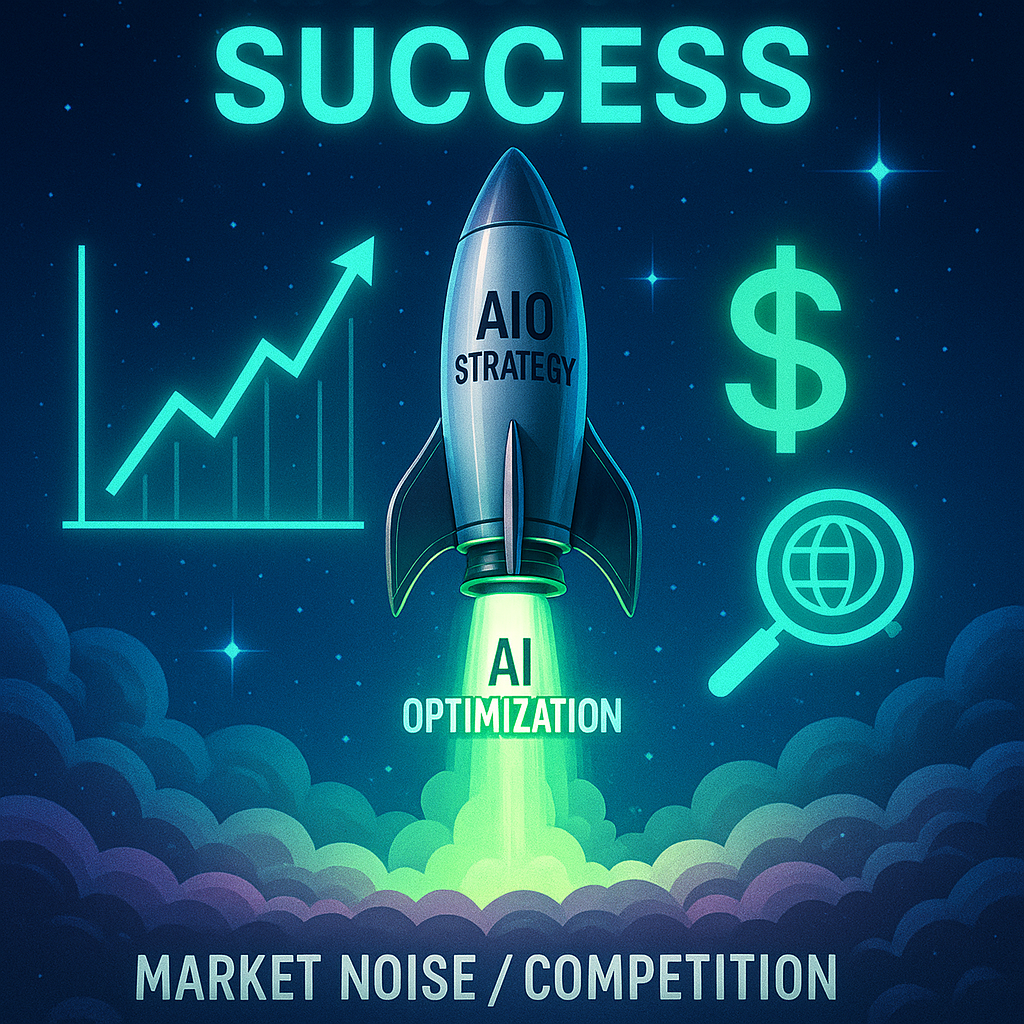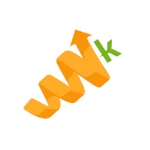AIO vs Traditional Marketing: The 2025 ROI Comparison Every CMO Needs
Organizations that use personalization generate 40% more revenue than those relying solely on traditional tactics. This isn’t just another incremental improvement. It represents a fundamental shift in how successful companies approach customer acquisition and retention in 2025.
For CMOs and marketing leaders wrestling with budget allocations, the AIO vs Traditional Marketing debate has moved beyond theoretical discussions to hard financial realities. The question is no longer whether artificial intelligence optimization will impact marketing effectiveness, but rather how quickly your organization can capture these measurable advantages while maintaining the brand-building strengths that traditional marketing provides.
TABLE OF CONTENTS:
- Understanding AIO vs Traditional Marketing Fundamentals
- ROI Performance Comparison: 2025 Data
- Targeting Precision and Audience Engagement
- Implementation Strategies and Hybrid Approaches
- Industry-Specific Considerations and Use Cases
- Measuring Success and Attribution Challenges
- Cost Analysis and Resource Requirements
- Future Outlook and Strategic Recommendations
- Making the Strategic Choice for Your Organization
- Related Video
Understanding AIO vs Traditional Marketing Fundamentals
AIO (Artificial Intelligence Optimization) marketing leverages machine learning algorithms, predictive analytics, and automated decision-making to personalize customer experiences at scale. Unlike traditional marketing’s broad-stroke approach, AIO systems analyze individual customer behavior in real time, adjusting messaging, timing, and channel selection based on continuously evolving data patterns.
Traditional marketing, conversely, relies on human insight, creative intuition, and established media planning across channels like television, radio, print, and direct mail. These approaches excel at building brand awareness and emotional connections through consistent messaging but operate with longer feedback cycles and less granular targeting.
The fundamental difference lies in adaptation speed and the depth of personalization. Traditional campaigns require weeks or months to adjust based on market feedback, while AIO systems can modify approaches within hours based on performance data. This responsiveness translates directly into measurable business outcomes, particularly for companies with diverse customer segments or complex buying journeys.
ROI Performance Comparison: 2025 Data
The financial case for AIO becomes clear when examining channel-specific performance data. Cross-industry analysis reveals AI-driven email marketing delivering 42:1 ROI, while AI-enhanced SEO achieves 22:1 returns. These numbers represent significant improvements over traditional channel performance, particularly when accounting for AIO’s continuous optimization capabilities.
| Marketing Channel | Traditional ROI | AI-Optimized ROI | Performance Lift |
|---|---|---|---|
| Email Marketing | 38:1 | 42:1 | +11% |
| SEO/Content | 16:1 | 22:1 | +38% |
| Paid Search | 5:1 | 8:1 | +60% |
| TV Advertising | 71% avg ROI | N/A | Channel-specific |
However, these performance improvements require context. Traditional channels like television advertising still deliver strong results for established brands targeting broad demographics, with an average ROI of 71% for campaigns with sufficient reach and frequency. The key insight isn’t that traditional marketing has become obsolete, but rather that AI optimization amplifies the effectiveness of digital channels where personalization and real-time adjustment create competitive advantages.
Targeting Precision and Audience Engagement
Companies using AI marketing agents see 45% higher customer engagement and 30% lower churn compared with traditional marketing automation users. These improvements stem from AI’s ability to identify the best touchpoint timing, personalize content based on individual preferences, and automatically adjust messaging based on behavioral signals.
“The transformation from traditional to AI-optimized marketing isn’t just about technology. It’s about moving from assumptions to evidence-based decision making in real-time.” – B2Metric Insights Team
The engagement advantages become particularly pronounced in B2B scenarios where buying cycles extend over months and involve multiple decision-makers. AI systems can track individual stakeholder interests, customize content for different roles within the buying committee, and sustain engagement momentum through personalized nurture sequences that adapt to interaction patterns.
Implementation Strategies and Hybrid Approaches
Most successful organizations in 2025 aren’t choosing between AIO and traditional marketing exclusively, but rather implementing hybrid strategies that leverage the strengths of both approaches. A software company implemented Karrot.ai to enhance its LinkedIn advertising strategy with AI-powered personalization. This resulted in a 187% increase in target account engagement and 64% higher MQL-to-opportunity conversions.
The implementation approach depends heavily on organizational maturity and customer characteristics. Companies with robust data infrastructure and digitally native audiences can move aggressively toward AIO implementations, while organizations serving traditional demographics or operating in highly regulated industries may benefit from gradual integration strategies.
Successful hybrid implementations typically begin with AI optimization of existing digital channels, email personalization, content recommendations, and automated bidding adjustments, while maintaining traditional brand-building activities through established media relationships. This approach allows organizations to capture immediate ROI improvements while preserving the brand equity and market presence that traditional marketing provides.
Industry-Specific Considerations and Use Cases
The AIO vs Traditional Marketing decision varies significantly across industries and business models. SaaS companies typically see the fastest ROI from AI optimization due to their digital-first customer interactions and rich behavioral data sets. E-commerce brands benefit from AI-powered product recommendations and dynamic pricing strategies that traditional approaches cannot match in terms of speed and personalization.
However, certain industries and scenarios still favor traditional marketing approaches. Luxury brands building aspirational positioning often rely on traditional media’s broad reach and prestigious associations. Local service businesses may find direct mail and radio advertising more cost-effective than sophisticated AI solutions, particularly for demographics with limited digital engagement.
Measuring Success and Attribution Challenges

The measurement complexity in AIO vs Traditional Marketing comparisons extends beyond simple ROI calculations. Traditional marketing measurement relies on brand-tracking studies, reach and frequency metrics, and campaign-level attribution, which may take weeks or months to yield actionable insights. AIO systems generate real-time performance data but require sophisticated attribution models to accurately credit cross-channel interactions.
The most effective measurement approaches combine traditional brand health metrics with AI-driven performance analytics. This dual-track measurement system captures both the immediate conversion impact of AI optimization and the longer-term brand equity effects that traditional marketing provides. Organizations implementing this comprehensive measurement approach typically see clearer ROI justification for both marketing approaches.
Attribution challenges become particularly complex in B2B environments where customers interact with multiple touchpoints across extended buying cycles. AI systems excel at identifying subtle influence patterns that traditional attribution models miss, but require careful calibration to avoid over-crediting digital touchpoints while under-valuing traditional brand-building activities.
Cost Analysis and Resource Requirements
The cost structure comparison between AIO and traditional marketing reveals nuanced trade-offs that extend beyond initial implementation expenses. Traditional marketing typically requires substantial upfront media buys with limited ability to adjust spending based on performance. Television campaigns, print advertising, and radio spots demand committed spending regardless of actual audience engagement or conversion performance.
AIO implementations involve different cost structures. Higher initial setup and platform fees, but greater spending flexibility and optimization capabilities. AI marketing platforms typically charge based on usage or performance, allowing organizations to scale spending directly with results. The learning curve costs for AIO can be significant, requiring staff training, data infrastructure investments, and potentially new vendor relationships.
However, the efficiency gains from AI optimization often offset these initial investments within the first year. Organizations with sufficient data volume and digital traffic typically see positive ROI from AIO implementations within 90 days, while traditional marketing campaigns may require full media cycles to demonstrate effectiveness.
Future Outlook and Strategic Recommendations
The trajectory for AIO vs Traditional Marketing in 2025 and beyond suggests continued convergence rather than complete replacement. AI capabilities will increasingly enhance traditional media planning and creative development, while traditional marketing principles of brand building and emotional connection remain relevant for AI-optimized campaigns.
Organizations positioning for future success should focus on developing hybrid competencies rather than choosing sides in the AIO vs Traditional Marketing debate. This involves building data infrastructure that supports AI optimization while maintaining traditional marketing relationships and capabilities that provide competitive differentiation.
The most significant opportunity lies in using AI to enhance traditional marketing effectiveness rather than replacing it entirely. AI-powered creative testing can improve traditional ad performance, while predictive analytics can optimize traditional media planning and budget allocation across channels.
Making the Strategic Choice for Your Organization
The AIO vs Traditional Marketing decision ultimately depends on your organization’s customer characteristics, data maturity, and growth objectives. Companies with digital-first audiences and robust data-collection capabilities should prioritize AI optimization initiatives that deliver immediate ROI improvements and competitive advantages through personalization.
Organizations serving traditional demographics or operating in relationship-driven industries may benefit from gradual AIO integration that enhances rather than replaces existing traditional marketing strengths. The key is developing measurement frameworks that accurately capture the value of both approaches and guide budget allocation decisions based on evidence rather than assumptions. The implementation should align with organizational capabilities and customer expectations rather than following industry trends that may not fit your specific market context.
For marketing leaders ready to capture these AI optimization advantages while maintaining traditional marketing strengths, partnering with experienced agencies can accelerate implementation timelines and reduce the learning curve. Work with the leading AI optimization agency to develop hybrid strategies that maximize both immediate performance gains and long-term brand-building objectives.
Related Video
For more insights and lessons about marketing, check out our Marketing School podcast on YouTube.
Frequently Asked Questions
-
What's the fundamental difference between AIO and traditional marketing approaches?
AIO leverages machine learning algorithms and predictive analytics to personalize customer experiences in real-time, while traditional marketing relies on human insight and broad-stroke messaging across established channels. The key difference is adaptation speed—AIO systems can modify campaigns within hours based on performance data, while traditional campaigns require weeks or months to adjust.
-
How much better does AI-optimized marketing perform compared to traditional methods?
AI-optimized marketing delivers significantly higher ROI across digital channels, with email marketing achieving 42:1 ROI (vs 38:1 traditional) and SEO reaching 22:1 ROI (vs 16:1 traditional).
-
Why is targeting accuracy such a significant advantage for AI-optimized campaigns?
AI-powered ad platforms directly improve media spend efficiency and campaign effectiveness, with AI marketing resulting in 45% higher customer engagement and 30% lower churn rates.
-
Should companies choose between AIO and traditional marketing exclusively?
Most successful organizations implement hybrid strategies that leverage both approaches rather than choosing exclusively. Companies typically start with AI optimization of digital channels while maintaining traditional brand-building activities, allowing them to capture immediate ROI improvements while preserving brand equity and market presence.
-
Which industries see the fastest ROI from AI optimization versus traditional marketing?
SaaS companies and e-commerce brands typically see the fastest ROI from AI optimization due to their digital-first customer interactions and rich behavioral data sets. However, luxury brands and local service businesses may still find traditional marketing more effective for building aspirational positioning or serving demographics with limited digital engagement.
-
What are the main cost structure differences between AIO and traditional marketing?
Traditional marketing requires substantial upfront media buys with limited adjustment capabilities, while AIO involves higher initial setup costs but offers greater spending flexibility based on performance. AI platforms typically charge based on usage or results, allowing organizations to scale spending directly with outcomes and often achieve positive ROI within 90 days.
-
How should organizations measure success when using both AIO and traditional marketing?
The most effective approach combines traditional brand health metrics with AI-driven performance analytics in a dual-track measurement system. This captures both immediate conversion impact from AI optimization and longer-term brand equity effects from traditional marketing, requiring sophisticated multi-touch attribution models to accurately credit cross-channel interactions.




